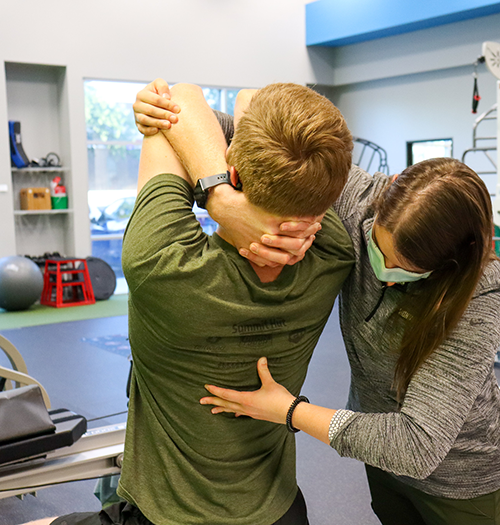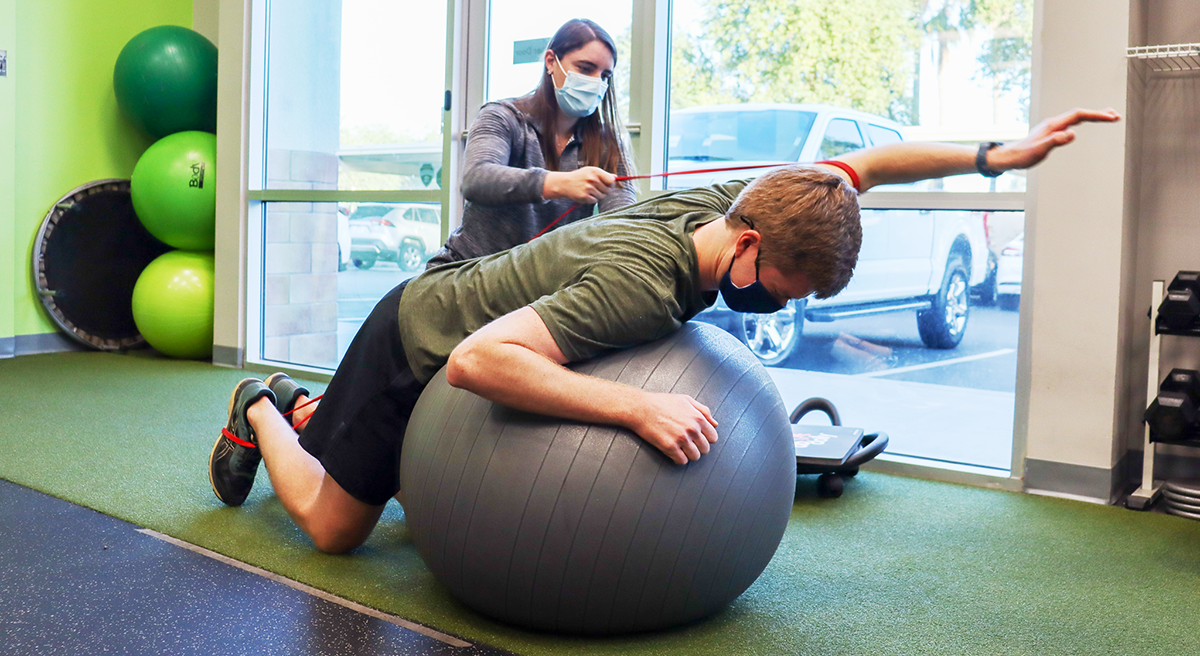by Alix Ungaretti, PT, DPT, CSCS
When the first thing you see is the steam coming off of the water, dew clinging to the lane lines, and you hear the gentle pulsing of the water into the gutters, guided by the winds of the morning, there is always the thought of “how is coach making me win today?”
I grew up in competitive swimming, and I have my older sister to thank for it. I watched her in swim lessons for 2 years before I decided to give it a go myself. I took one week of lessons and was told to join the swim team. I competed for 10 years, specializing in the butterfly and distance freestyle, alongside my sister.
Our swimming careers were not without injury, however. My sister began to experience shoulder pain at a young age. She received physical therapy for shoulder impingement and was able to compete without missing a stroke. I tore my ACL playing basketball at school, and missed a few weeks after the initial injury, then again following surgery. In the 2 years between injuring my knee and having the surgery, I ended up swimming a personal best in the 500-yard freestyle at high school state, taking second place behind my sister.
How were we able to continue competing and functioning at high levels despite injury?
I have to credit our physical therapists. Rather than saying no to swimming, they changed our expectations of what training for swimming typically looks like, teaching us that the work outside of the pool is just as important as the work in the pool. This doesn’t just include preventative exercise and lifting weights, but also nutrition, sleep, and time management.
As a physical therapist, athletic trainer, and strength and conditioning specialist, I have had the opportunity to work with many swimmers, which has helped me to reflect on my career in swimming, and what I could’ve done to be more successful. It has also allowed me to use my experience to guide athletes to success in a way that is beneficial to their sport.
Swimmers … interested in learning more about success in and out of the pool? Check out Spooner blog: Battling Swimmer’s Shoulder: Tips for Safe Swimming and a Proper Warmup

Many overuse injuries seen in swimmers can be prevented with postural exercise and correction, achieved by strengthening and stretching. Overuse injuries can be treated with similar exercises, as well as other modalities and hands-on techniques by trained physical therapists and athletic trainers.
Knowing what I know now, I hope to change the injury prevention and treatment approach for swimmers of all ages and levels, be it through swim technique analysis at the pool, or at an evaluation at the clinic.
To be the best in the pool, you have to be the best out of the pool, too.
Swimmers who experience pain or soreness for more than 48 hours should seek medical attention. The experts at Spooner can work with you to evaluate and treat most common swimming injuries and help prevent more serious long-term effects. We would be happy to schedule a complimentary evaluation to review the symptoms you are experiencing and guide you on the best course of care. Schedule a complimentary evaluation with a Spooner therapist here.

